EVs Are Becoming More Expensive, Not Less

A few years ago, the industry narrative was that all-electric vehicles would reach financial parity with their combustion-driven counterparts in 2025. The assumption was that this would gradually occur by way of ramping up battery production and leveraging economies of scale. However, reality had a different take, as the world is now confronting record-setting prices across the board. Manufacturer and dealer hikes have resulted in the average invoice of EVs rising to $54,000 — roughly 10 grand higher than the typical transaction price of gasoline-powered vehicles, according to J.D. Power.
With economic pressures spiking the value of all automobiles, hardly anything is leaving the lot for less than it could have been had for in 2020. But the increases seen on all-electric models are actually outpacing the models we’ve been told they’re supposed to replace.
Manufacturers are citing inflation as the main culprit. But material shortages have also played a significant role, as it’s becoming increasingly difficult to source the raw materials for battery production. Manufacturers have spent the last few years trying to shore up their own supplies and/or develop strong relationships with the relevant suppliers. But it was already difficult to keep up with demand before pandemic-related shutdowns stymie supply chains. Now, the industry finds itself in a situation where nations are getting choosier about who they export to as demand goes up, supplies become further limited, and inflationary pressure mounts.
According to The Wall Street Journal, it has created a perfect storm for the industry and companies are doing their utmost to keep up. Unfortunately, keeping up means accelerating electrification plans that seemed somewhat risky to begin with and raising prices in a bid to outpace inflation.
From WSJ:
Last week, GM tacked on $6,250 to the price of GMC Hummer electric pickup-truck models, which now range from around $85,000 to $105,000, citing an increase in commodity and logistics costs. The waiting list for the recently released truck is about two years, a GM spokesman said.
Tesla this year has increased prices three times for a performance version of its top-selling Model Y SUV, adding a total of about 9 [percent] to the sticker price, which is now $69,900, according to Bernstein Research.
Overall, the average price paid for an electric vehicle in the U.S. in May was up 22 [percent] from a year earlier, at about $54,000, according to J.D. Power. By comparison, the average paid for an internal-combustion vehicle increased 14 [percent] in that period, to about $44,400.
The companies say they are trying to offset a recent price rise in raw materials that go into the batteries to power electric cars, by far the most expensive component of an EV. Prices for lithium, nickel and cobalt have roughly doubled since before the Covid-19 pandemic began, according to consulting firm AlixPartners LLP.
Last week, Ford finance chief John Lawler said unprecedented EV commodity expenses have wiped out the profit margin for Mach-E crossover. It raised prices in response and has also rejiggered its EV leasing strategy to prohibit buyouts in the United States, effectively allowing itself to recycle more batteries. But it’s really just an easy way for the brand to retain the most expensive component on electrified vehicles, upsell customers on their next lease, and keep anybody from getting away with a good deal on an off-lease product during high inflation. Toyota and other automakers have pitched similar concepts, often calling them “closed-loop battery ecosystems.” They don’t always function the same (despite the similar jargon). But the overarching goal remains similar — keep the hardware close however you can and always tell the public it’s for the good of the environment.
Insidious or not, the industry doesn’t have much of an option. If automakers are to continue selling vehicles in places like China or the European Union, they’ll have to start complying with brutally stringent emissions laws. You’re welcome to debate whether those regulations are the result of large, well-established companies lobbying to make life tougher for smaller automakers, actors wanting to exercise direct market control using ESG scores and faux environmentalism, or a necessary step to ensure the wellbeing of the planet. But that still won’t change the current realities of today’s market. The rules have been established, investments have been made, and the cars are now here, with precious little wiggle room being left for a struggling economy.
The industry’s preferred solution has been to get chummy with materials producers. While this runs the risk of automakers expanding into business sectors they previously ignored, leadership is claiming it’s the only way to ensure they’ll be able to continue manufacturing batteries at a pace necessary to eventually mainstream EVs.
Fortunately for automakers, demand is still relatively high across the board. Much of this is down to years of diminished output — something that’s at least partially their fault — and sustained hype for all-electric vehicles. The cars themselves have also gotten better over time, with mainstream automakers pulling away from teeny-weenie compact EVs for models that are more in line with consumer tastes. This again pokes holes in the argument that this is all about lessened emissions. But it has helped improve adoption rates, rationalized billions in development spending, and finally given Tesla some valid competition.
EV pricing has not gone up for all models, however. Older models can still be found for roughly the same price as they were before and GM even lopped several grand off the top of the Chevrolet Bolt, which is no longer eligible for the full $7,500 EV tax credit now that the company has reached its quota. Though it should also be noted that the vehicle previously underwent a high-profile safety recall pertaining to faulty battery cells.
Speaking of EV tax credits, most manufacturers (minus Tesla, ironically) have asked the United States to renew or expand on the previous scheme as more automakers reach capacity. The Biden administration has likewise been pushing for this but has run into problems by proposing that additional financial incentives could be linked to unionized labor. Surveys have also shown that the public, despite still showing an interest in all-electric vehicles, may have run out of goodwill for the incentive scheme after two years of elevated government spending. Though the industry feels this may be the best way to get EVs away from being viewed as luxury vehicles reserved or customers with extra zeros in their bank account and into the driveways of lower-income consumers. Expanding the national charging network, which has also gotten some financial assistance from Congress, is the other piece of that puzzle.
[Image: Guteksk7/Shutterstock]

A staunch consumer advocate tracking industry trends and regulation. Before joining TTAC, Matt spent a decade working for marketing and research firms based in NYC. Clients included several of the world’s largest automakers, global tire brands, and aftermarket part suppliers. Dissatisfied with the corporate world and resentful of having to wear suits everyday, he pivoted to writing about cars. Since then, that man has become an ardent supporter of the right-to-repair movement, been interviewed on the auto industry by national radio broadcasts, driven more rental cars than anyone ever should, participated in amateur rallying events, and received the requisite minimum training as sanctioned by the SCCA. Handy with a wrench, Matt grew up surrounded by Detroit auto workers and managed to get a pizza delivery job before he was legally eligible. He later found himself driving box trucks through Manhattan, guaranteeing future sympathy for actual truckers. He continues to conduct research pertaining to the automotive sector as an independent contractor and has since moved back to his native Michigan, closer to where the cars are born. A contrarian, Matt claims to prefer understeer — stating that front and all-wheel drive vehicles cater best to his driving style.
More by Matt Posky
Latest Car Reviews
Read moreLatest Product Reviews
Read moreRecent Comments
- ToolGuy If these guys opened a hotel outside Cincinnati I would go there to sleep, and to dream.
- ToolGuy Michelin's price increases mean that my relationship with them as a customer is not sustainable. 🙁
- Kwik_Shift_Pro4X I wonder if Fiat would pull off old world Italian charm full of well intentioned stereotypes.
- Chelsea I actually used to work for this guy
- SaulTigh Saw my first Cybertruck last weekend. Looked like a kit car...not an even panel to be seen.
















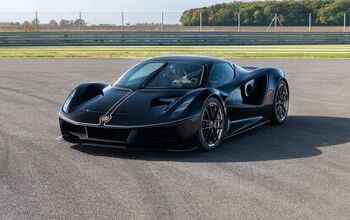
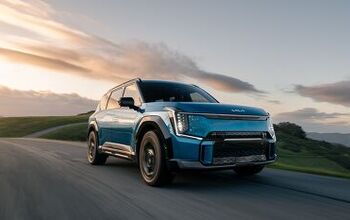
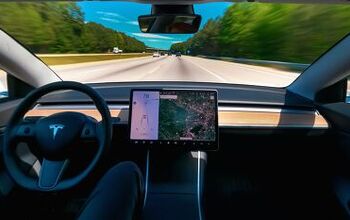
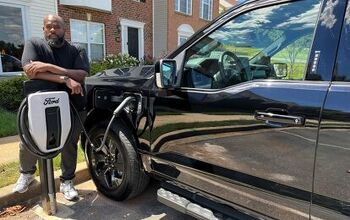
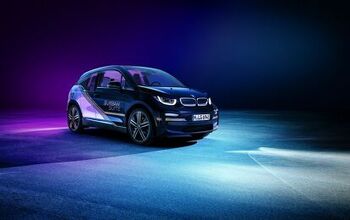
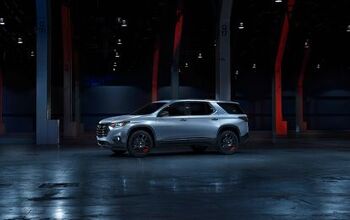
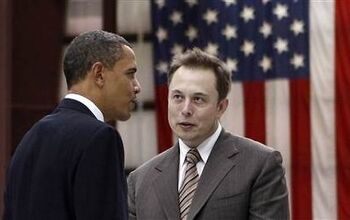






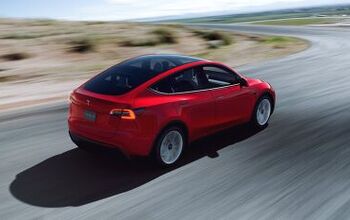

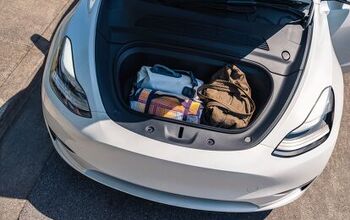
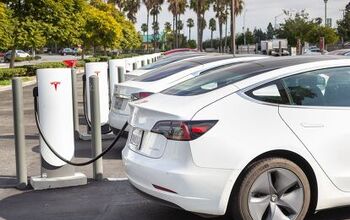
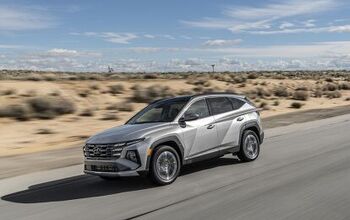
Comments
Join the conversation
Not looking to start a fight and I understand the situation where households have more than one car, but... "Would never pretend otherwise. But I think my situation – suburban family with two cars and a traffic-heavy commute – describes an awful lot of people in this country, for whom an EV makes a ton of sense when paired with a more conventional vehicle. When I trade in the Alfa, it will almost certainly _not_ be for an EV, but it may well be for a PHEV." The idea that an EV makes a ton of sense when you have another gas powered car to use when its needed/is more convenient, is an enormous statement against EVs.
Matt Posky has written multiple articles about how there isn’t demand for EVs in the United States and that Tesla only gets lots of sales because it’s a cult. Now he’s stating that there actually is too much demand for EVs (which has been obvious to anyone over the past two years seeing the insane waitlists to buy any desirable EV). So, which one is it? Also I have a question about this statement: “This again pokes holes in the argument that this is all about lessened emissions.” Can you please explain this?